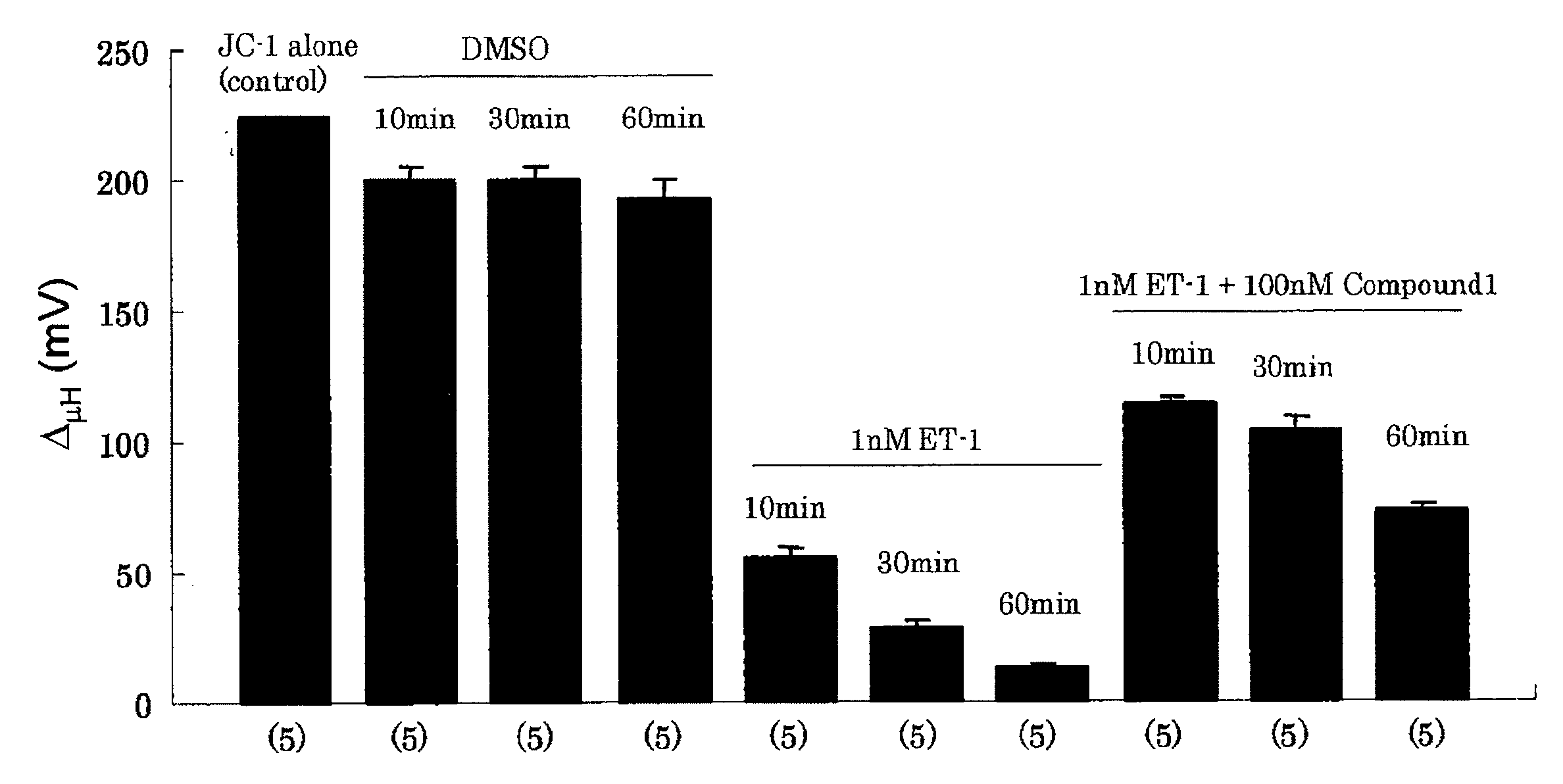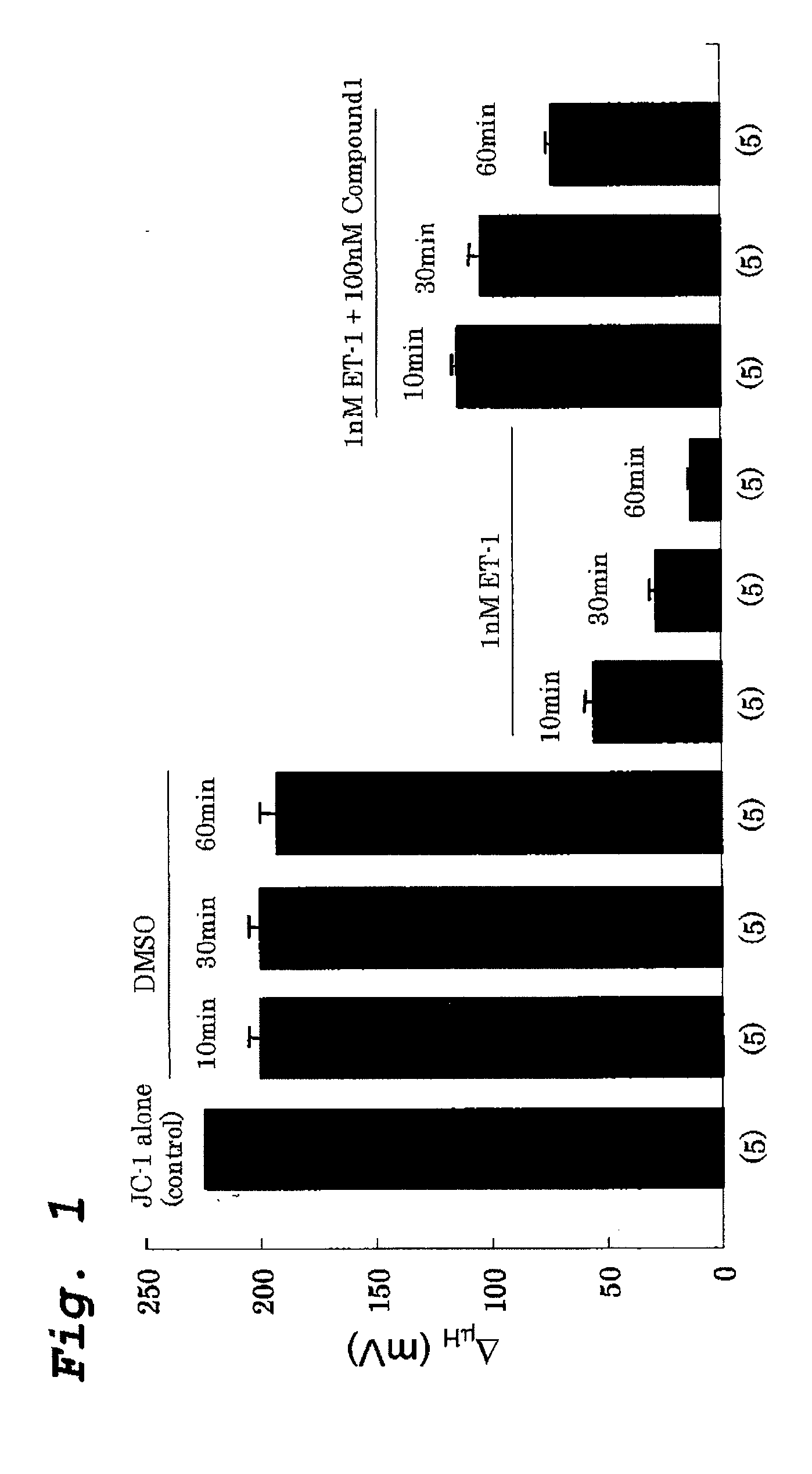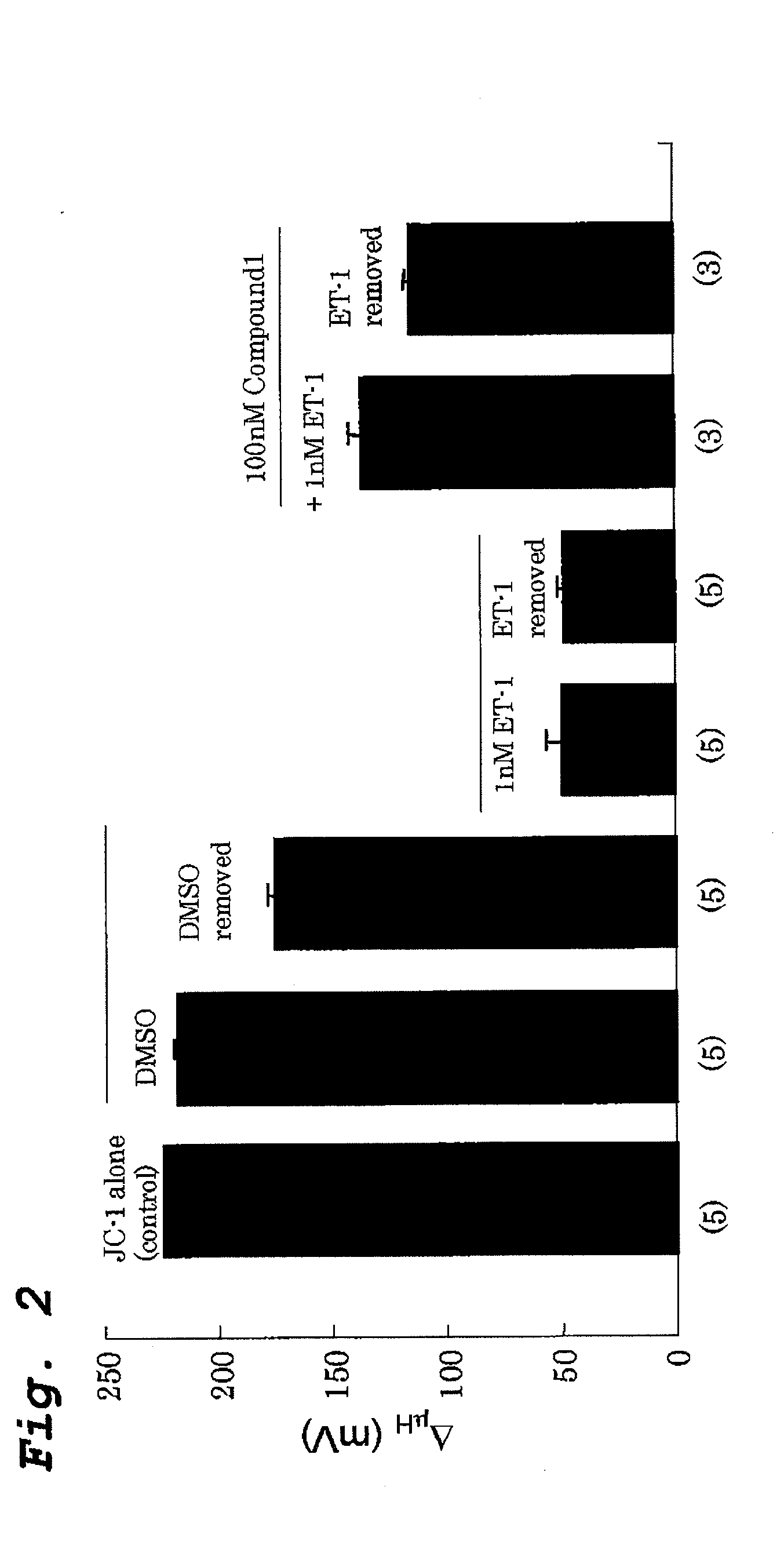Method for protecting mitochondria
a technology for mitochondria and mitochondria, applied in the field of mitochondria protection, can solve the problems of oxidative damage to pulmonary and other tissues of the body, potentially toxic oxygen radicals, and inducing significant oxidant stress-related side effects
- Summary
- Abstract
- Description
- Claims
- Application Information
AI Technical Summary
Benefits of technology
Problems solved by technology
Method used
Image
Examples
example 1
Methods
[0132]Human pulmonary Artery Smooth Muscle cells (PASMC) were grown to confluence on 10×22 mm glass cover slips in Clonetics smooth muscle basal media supplemented with growth hormones and fetal bovine serum. The cells on glass cover slips were then placed in 3 ml Hank's Balanced Salt Solution (HBSS) supplemented with 12 mM of the mitochondrial dye JC-1 and incubated at 37° C. for 30 minute. The cells on the cover slips were then washed with 3 ml HBSS and mounted in a cuvette in a spectrofluorimeter with 3 ml HBSS. The emission spectra with excitation at 490 nm were taken over the range of 520 nm to 620 nm (150 sec). 250M (0.1% acetone) FCCP, which leads complete depolarization of the mitochondrial membrane potential, was added at the end of each experiment. The spectra were normalized by dividing them by the fluorescence at 570 nm. The value obtained after FCCP treatment was assigned a value of 0 mV and the individual FCCP ratio was subtracted from each ratio point. The cont...
example 1-1
[0133]Effect of compound 1 (11-deoxy-13,14-dihydro-15-keto-16,16-difluoro-PGE1) on Endothelin-1 (ET-1) induced loss of mitochondrial membrane potential of human pulmonary artery smooth muscle cells was examined (FIG. 1).
[0134]The cells were treated with 0.1% DMSO (vehicle for Compound 1), 1 nM Endothelin-1 (ET-1) or 1 nM ET-1 and 100 nM Compound 1 and scans were taken after 10, 30 and 60 minutes of the incubation. FCCP was added at the end and incubated for 60 minutes before taking scan. N=5 cover slips for all conditions.
Result
[0135]The control mitochondrial membrane potential (JC-1) was taken to be 224 mV. When the cells were treated with 1 nM ET-1 for 10, 30 and 60 min, the mitochondrial membrane potential decreased to 54.5±4.3 mV, 28.0±2.8 mV, and 13.1±1.0 mV, respectively. The changes were all highly significant (p<0.001 in respect to control and DMSO). Compound 1 protects against ET-1 induced loss of membrane potential at all times tested. When the cells were treated with 1 nM...
example 1-2
[0136]Effect of Compound 1 on ET-1 induced irreversible loss of mitochondrial membrane potential of human pulmonary artery smooth muscle cells (PASMC) was examined (FIG. 2).
[0137]The cells were treated with 0.1% DMSO or 1 nm Endothelin-1 (ET-1) and scans were taken after 30 minutes of incubation. The medium was then removed by washing the cells with fresh HBSS and scans were taken after 30 minutes. FCCP was added to the dish at the end and incubated for 60 minutes before taking scan. N=5 cover slips. In other set of 5 cover slips 1 nM Endothelin-1 (ET-1) and 100 nM Compound 1 were added and scans were taken after 30 minutes of incubation. The medium was then removed by washing the cells with fresh HBSS and 100 nM Compound 1 was added on top of it. Scans were taken after 30 minutes. FCCP was added at the end and incubated for 60 minutes before taking scan. N=3 cover slips.
Result
[0138]There was a small effect of treatment 0.1% DMSO for 30 min to 217.8±1.0 mV which decreased further (1...
PUM
| Property | Measurement | Unit |
|---|---|---|
| membrane potential | aaaaa | aaaaa |
| time | aaaaa | aaaaa |
| heat | aaaaa | aaaaa |
Abstract
Description
Claims
Application Information
 Login to View More
Login to View More - R&D
- Intellectual Property
- Life Sciences
- Materials
- Tech Scout
- Unparalleled Data Quality
- Higher Quality Content
- 60% Fewer Hallucinations
Browse by: Latest US Patents, China's latest patents, Technical Efficacy Thesaurus, Application Domain, Technology Topic, Popular Technical Reports.
© 2025 PatSnap. All rights reserved.Legal|Privacy policy|Modern Slavery Act Transparency Statement|Sitemap|About US| Contact US: help@patsnap.com



